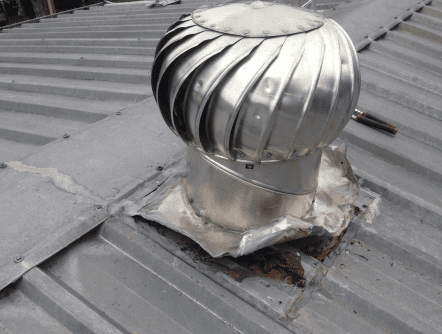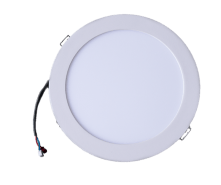Last Updated on February 1, 2025 by Solar Whiz
Roof ventilation is a critical aspect of maintaining a comfortable and energy-efficient living space. However, not all solutions are created equal. Among them, the Whirlybird roof vent stands as a controversial option.
In this topic, we delve into the limitations and drawbacks of Whirlybird roof vents, exploring their shortcomings in effectively addressing heat and moisture challenges. We’ll also consider alternatives to whirlbybirds that offer more robust solutions in the realm of roofing ventilation.
What is the purpose of the Whirlybird roof vent?
The Whirlybird roof vent aims to serve two primary functions: heat extraction and moisture management. During the hotter months, it works to remove heat from the roof space, contributing to a cooler indoor environment. The purpose of this is to try to create a cooling effect that not only enhances comfort but also boosts the efficiency of your air conditioning system. By circulating cold air through a cooler roof space, the air conditioning system doesn’t need to work as hard to maintain the desired temperature.
Do whirlybirds need electricity?
Traditional whirlybirds rely mostly on wind power to operate. They also use rising and expanding heat to push the turbines and extract heat. However, the efficiency of these operating methods is questionable. Whirlybirds tend to need strong winds to operate at a meaningful level and the heat convection effect is minimal. So although whirlybirds do not need electricity to operate and are therefore free to run, they may be having very little impact on ventilation.
Do whirlybirds let rain in?
The turbines on a whirlybird are designed in such a way that rain doesn’t really fall through them. This does make them weatherproof. However, water leaking into the house can be a problem if the whirlybird is not installed properly or if there is particularly wild weather.
Are whirlybirds expensive?
Whirlybird roof vents are not expensive individually. You can buy them for as low as $100. This might seem like a cheap and effective way to ventilate your home, but the costs quickly add up when you realise how many you have to install. Due to their low capacity to move air in ideal conditions as well as their dependence on the wind to operate, you will likely need to install a lot of whirlybirds to have any effect on the ventilation in your house.
Additionally, if they have any effect, it will probably only be in ‘ideal’ windy conditions which might not be when you need ventilation. Houses often feel the heat the most on still and sunny summer days. If your whirlybird isn’t running because there is no wind, then your house will not get any of the benefits we discussed earlier in the article.
What is the best alternative to whirlybirds?
The best and smarter whirlybird alternative to traditional whirlybirds is solar whirlybirds like Solar Whiz.. Our systems have a much greater air extraction capacity. For example, the largest residential model, the SW-AU-R-40 can extract up to 2300 cbm/hr and is equivalent to 23 regular whirlybirds. Our smallest residential unit can move 1200 cbm/hr or air; equal to 12 traditional whirlybird units!
The SW-AU-C-155 model which is for commercial or industrial applications can extract up to 10,000 cubic metres of air per hour.
A Word From Solar Whiz
While Whirlybird roof vents have been marketed as a cost-effective solution, their limitations cannot be ignored. From inadequate performance in hot, low-wind environments to the potential for rain infiltration, these vents fall short of providing comprehensive and reliable ventilation.
As we look to the future, it’s essential to explore alternatives to whirlybirds that deliver more consistent and efficient results. Making an informed choice about roof ventilation is crucial for creating a comfortable and healthy living environment for years to come.
Frequently Asked Questions
What is the purpose of the Whirlybird roof vent?
The Whirlybird roof vent serves two primary functions: heat extraction and moisture control. During hot seasons, it expels heat from the roof space, making your indoors cooler. Consequently, your air conditioner operates more efficiently, enhancing comfort.
Do whirlybirds need electricity?
Whirlybirds primarily rely on wind power and heat convection to operate. They don’t require electricity, but their efficiency remains questionable, relying heavily on strong winds for significant ventilation.
Do whirlybirds let rain in?
Whirlybirds are weatherproof, designed to prevent rain ingress. However, improper installation or severe weather conditions may lead to water leaks inside the house.
Are whirlybirds expensive?
Individually, Whirlybirds are relatively affordable, starting at around $100. However, due to their low ventilation capacity and reliance on wind, multiple units are often needed. Their effectiveness depends on ideal windy conditions.
What is the best alternative to whirlybirds?
Solar Whiz is the best alternative to whirlybirds. Solar Whiz solar-powered roof ventilation systems provide significantly greater air extraction capacities, making them more efficient and reliable than traditional Whirlybirds.




